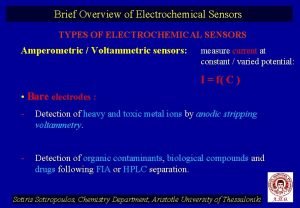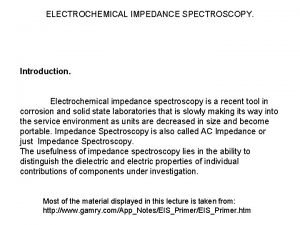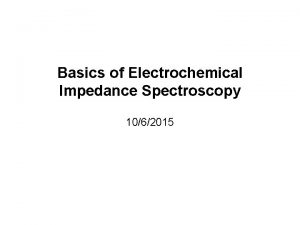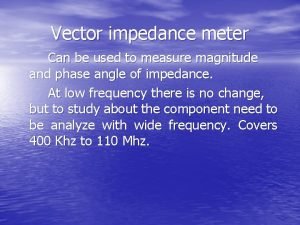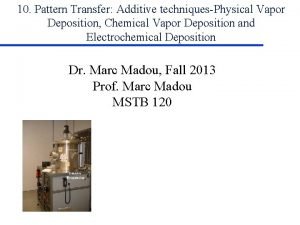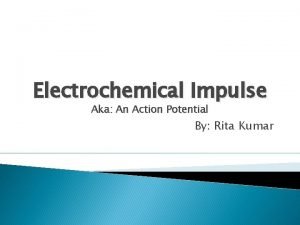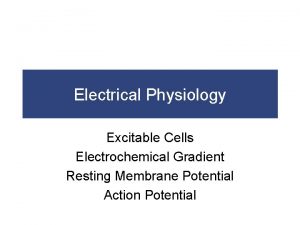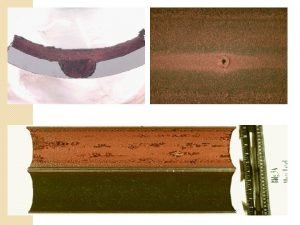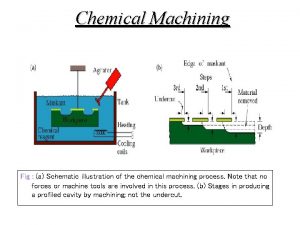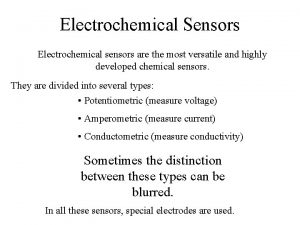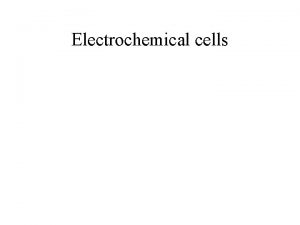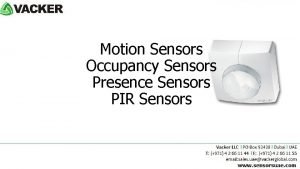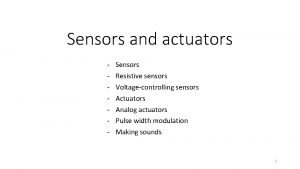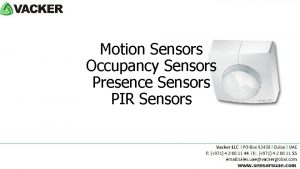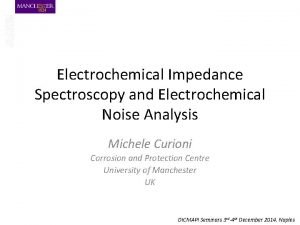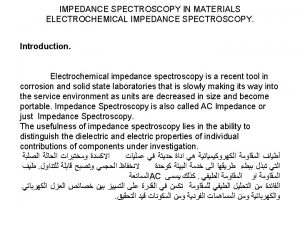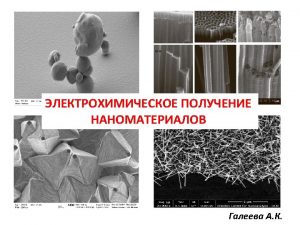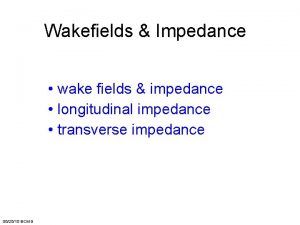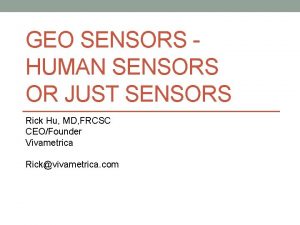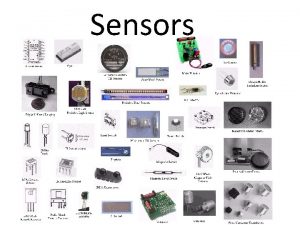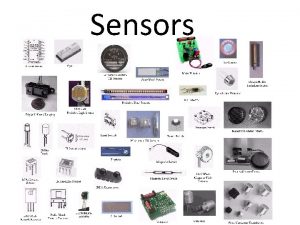Electrochemical Impedance Sensors for Wastewater Epidemiology Pedro Estrela




















- Slides: 20

Electrochemical Impedance Sensors for Wastewater Epidemiology Pedro Estrela Department of Electronic & Electrical Engineering Centre for Biosensors, Bioelectronics and Biodevices (C 3 Bio) Water Innovation & Research Centre (WIRC) University of Bath, UK

Contents Community Sewage Sensors for Wastewater Epidemiology Amperometric DNA sensor Sensor response Detection of mitochondrial DNA in wastewater Cocaine impedance-based aptasensor Sensor response Effect of matrix Validation Conclusions

Community Sewage Sensors for monitoring Public Health by Wastewater Analysis Ø Why Sensors? • • rapid, cost-effective minimal sample processing potential for on-site detection real time Ø Sewage Biomarkers • Drug biomarkers (e. g. cocaine) • Disease and health markers (e. g. pathogens) • Cancer markers (e. g. PSA) Yang et al, Environ Sci Technol 49 (2015) 5845 Early warning sensing system for public health and effective intervention

Community Sewage Sensors for monitoring Public Health by Wastewater Analysis Environ. Sci. Technol. 49 (2015) 5845

DNA intercalator DNA biosensor platform with ferrocenyl intercalators

DNA sensing DNA biosensor platform with custom synthesized intercalators • LOD reach 10 p. M for DNA, dynamic range spanning from 0. 1 n. M to 100 n. M • Peak current decreased with the increasing number of mismatched base pairs (1µM), indicating single base pair mismatched could be detected • Potential to detect single nucleotide polymorphisms (SNPs)

DNA isolation and characterization • DNA yields (50 m. L obtain 18 -95 ng/µL) • Wastewater samples for isolation: - VEAS treatment plant (Oslo, Norway) (WW 1) - urine pool from summer festival Oslo, 2014 (WW 2) - Distilled H 2 O for control (NG 1) - human gene: positive control (PG) - non-nucleotide water: negative control NG 2

mt. DNA detection in wastewater • 195 bps human-specific mt. DNA was amplified from wastewater • mt. DNA could be used as potential population biomarker, associated to cancer breast biomarkers • LOD for the detection of PCR product : WW 1 7. 1 n. M (1/100 dilution) and WW 2 4. 2 n. M (1/200 dilution)

mt. DNA detection in wastewater • DNA samples extracted from WW 1 an WW 2 without PCR were analysed - WW 2: positive; WW 1: negative;

EIS • Electrochemical Impedance Spectroscopy is one of the most promising label-free DNA detection techniques • DNA charge creates electrostatic barrier to negatively charged redox couple in solution: [Fe(CN)6]3 -/4 • Hybridisation expands electrostatic barrier making it more difficult for redox marker to approach electrode [Fe(CN)6]3 -/4 - Au

EIS • Three-electrode setup • Superimpose small ac voltage on open circuit potential • Measure ac current in phase and out of phase → real and imaginary parts of the impedance : Z = Zreal + i Zimag • Scan frequency of measurement • Fit electrical circuit model Cdl high f Rs Rct

DNA Aptamers • DNA aptamers are single-stranded DNA that can bind to their targets with high affinity and specificity by undergoing conformational changes • DNA aptamers have a number of advantages over antibodies, in particular with regards to their lower cost, easy manipulation and potential for controlled chemical attachment to electrodes PSA

EIS aptasensor: PSA in wastewater • Electrochemical impedance spectroscopy (EIS) - label-free (DNA, protein. . ), rapid response, portable assay • DNA-directed immobilization aptasensor (DDIAS) - a novel immobilization strategy for aptamer (“artificial antibody”) sensors Yang et al. Analyst 2015; 140, 2628

Cocaine aptasensor DNA-directed immobilization aptasensor for cocaine detection 14

Matrix effects Evaluation of matrix effects on developed cocaine sensors • Sensors can be used for detection in wastewater

Sensor response DDIAS for quantitative cocaine detection to monitor drug abuse and use trends • LOD at 10 n. M (0. 3 ng/m. L); dynamic range: 10 n. M - 5 µM ; • highly selective: detection in urine and sewage samples Yang et al Sci Report 2016 (6), 21024

Validation Towards drug consumption: COC Sensors for quantitative detection of wastewater Weekly profile of COC concentration pattern validated by mass spectrometry (MS) • Cocaine consumption on weekend is higher than that on workdays; • Drug concentration trends similar for sensors and mass spectrometry • Sensors provide rapid response time, low cost and potential for on-site assay

Conclusions and perspectives Community Sewage Sensors for public health • mt. DNA detected in wastewater samples showing applicability of sensors • DDIAS was used for quantification of cocaine in wastewater for the evaluation of drug use trends • Aptasensors have been used for the detection of prostate specific antigen in wastewater • Future work will try to construct a range of community sensors (arrays) for portable and multiplexed assay of sewage biomarkers to monitor public health (diabetes, epidemic diseases, etc. )

Lab-in-a-briefcase approach

Acknowledgments Shu Jiang, Zhugen Yang, Chris Frost, Barbara Kasprzyk-Horden (Dept Electronic & Electrical Engineering / Dept Chemistry, University of Bath) EPSRC GCRF “Developing Resilient Nations – Towards a Public Health Early Warning System via Urban Water Profiling” (Re. NEW) Marie Curie Initial Training Network “A new paradigm in drug use and human health risk assessment: Sewage profiling at the community level” (SEWPROF) p. estrela@bath. ac. uk go. bath. ac. uk/biosensors Environ Sci Technol 49 (2015) 5845 – viewpoint Environ Sci Technol 49 (2015) 5609 – DNA sensor Analyst 140 (2015) 2628 – DDI PSA aptasensor Sci Rep 6 (2016) 21024 – cocaine aptasensor
 Poema sobre as estrelas
Poema sobre as estrelas Types of electrochemical sensors
Types of electrochemical sensors Electrochemical impedance spectroscopy
Electrochemical impedance spectroscopy Charge transfer resistance
Charge transfer resistance Vector impedance meter block diagram
Vector impedance meter block diagram Pedro estrela
Pedro estrela What is the reaction at the cathode in a breathalyzer?
What is the reaction at the cathode in a breathalyzer? What are electrochemical series
What are electrochemical series Diffusion limited
Diffusion limited Cathode vs anode equation
Cathode vs anode equation Giner electrochemical systems
Giner electrochemical systems Khancademy
Khancademy Types of electrochemical corrosion
Types of electrochemical corrosion Refractory period anatomy
Refractory period anatomy Electrochemical gradient
Electrochemical gradient Electrochemical series order
Electrochemical series order Prevention of corrosion
Prevention of corrosion Electrochemical deposition
Electrochemical deposition Balance redox
Balance redox Chemical machining applications
Chemical machining applications Electrochemical series
Electrochemical series

